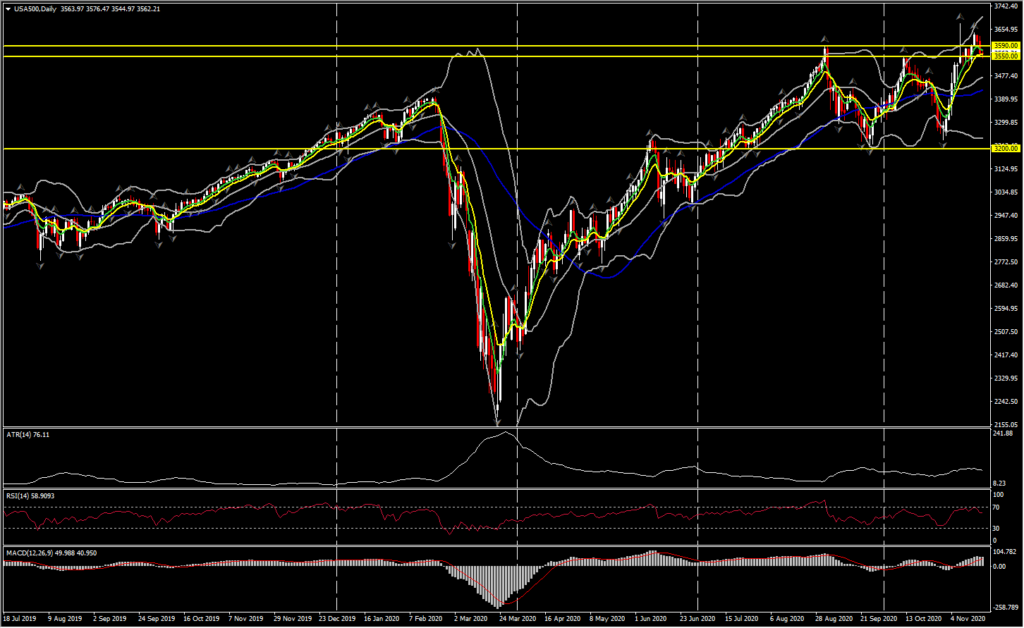In the US, Holiday sales, as gauged by retail sales, are poised for big 5%-6% 2020 gains that will outpace both last year’s increase as well as rise above the 4% post-recession average, despite service sector weakness that should leave near-zero y/y values for consumer spending overall. Big gains were also seen in 2010 and 2011, which were driven by the rebound out of the 2008 recession.
Despite the pandemic, consumer confidence remains firm, stock prices have risen to new highs, payrolls are trending sharply upwards, and 2020 disposable personal income is on track for a huge 7.4% increase that will mark the largest rise since 2000, thanks mostly to the CARES Act.
The nominal annual holiday gains for retail sales are forecasted at 5.7% and 5.0% for retail sales ex-autos. There was an improvement in these sales measures in 2019 to y/y gains of 4.4% for retail sales and 4.2% ex-autos, with a 4.1% gain for nominal consumption, after restrained 2018 gains, and a post-recession low in 2015. However because of service sector weakness, both real PCE and real PCE ex-autos should decline, with drops of -0.8% and -1.2% respectively.

Consumer Fundamentals
The two graphs below illustrate the employment situation heading into the holiday season over the past ten years. The first graph shows the y/y change in payrolls as well as the y/y change in the jobless rate on an inverted axis. This graph illustrates the gradual acceleration in nonfarm payroll growth following the last recession to a 2015 peak at 2.0% y/y growth. Now, the pandemic has prompted a plunge in nonfarm payrolls and a -6.1% drop is expected in 2020, compared to a 1.3% y/y increase in 2019.


Consumer confidence and Michigan sentiment have both weathered the pandemic remarkably well, and have remained above their lows from the 2008 recession. Both measures bottomed out this year in April when the initial round of lockdowns went into effect, with consumer confidence dipping to 85.7 that month and Michigan Sentiment at 71.8. Since then, consumer confidence has climbed to 100.9 through October. Meanwhile Home price measures held up well through the lockdowns, and are on a firm trajectory into year-end.
Despite pandemic disruptions, confidence is being propped up by heightened demand in many industries and regions, a booming housing market, and lofty stock prices that may be seen as a reflection of accommodative monetary policy.
Stock prices dipped sharply in early Q2 as lockdowns were implemented and the USA500 plunged to an April average of 2,762. Stocks have rallied sharply since then, and we should see a USA500 average of around 3,577 in November. This is up from 3,105 in November of last year. Appreciating stock prices should lift consumer spending heading into the holiday season as they bolster both confidence and wealth.

Changes in net worth might have only a weak correlation with trends in spending, but the wealth effects, and the continued gains for home values and stock prices have translated to a solid climb in wealth into the holiday season. Household wealth as a percentage of disposable income dipped in the beginning of 2020 but this was the result of the bounce in disposable income that resulted from stimulus payments.
Holiday Sales Forecasts
There are several holiday sales forecasts that the markets monitor, and thus far the only official forecast shows a y/y gain that undershoots the retail sales assumptions, but beats the estimates for consumption overall.
The International Council of Shopping Centers (ICSC) expects growth of 1.9% for the traditional holiday season (November plus December) from chain stores. This is well below their 4.9% forecast of last year, and their 4.5% forecast for ’18.
The National Retail Federation (NRF) declined to make a holiday sales forecast this year given the uncertainty around the pandemic. However, they have noted that consumers appear to have fully embraced an earlier start to the holiday shopping season. Previously their 10-year average was 3.0% for holiday season growth.
Key Story-lines for the Season
- Despite the pandemic, holiday sales are expected to post a stronger y/y pace of growth this year than last, and remain firm relative to the post-recession pace of growth.
- Employment has been severely depressed by the pandemic, but job growth has been posting strong gains heading into the holiday season.
- Despite the toll on workers, stimulus payments provided a lift to disposable income that will bolster holiday sales.
- Consumer confidence and producer sentiment are both holding at remarkably firm levels, all things considered.
- As is the norm, stores will push high-profile discounts early and aggressively to pull ahead sales, shore-up market-share, and put a positive spin on early sales reports.
- Sales are increasingly front-running Black Friday itself, with a push toward Thanksgiving Day shopping and earlier discounts. The pandemic has likely accelerated this trend as retailers place greater emphasis on online sales around Thanksgiving.
Holiday sales are poised for firm y/y retail sales gains this year as spending shifts to goods from services, though overall y/y consumption gains will be lean. Α big 5%-6% y/y 2020 gain is expected for goods measures, though service sector weakness should leave near-zero y/y values for consumer spending. Consumer confidence has remained surprisingly firm despite the pandemic, with stock prices and payrolls climbing, wages firm, and 2020 disposable personal income receiving a hefty boost from the CARES Act.
Click here to access the Economic Calendar
Andria Pichidi
Market Analyst
Disclaimer: This material is provided as a general marketing communication for information purposes only and does not constitute an independent investment research. Nothing in this communication contains, or should be considered as containing, an investment advice or an investment recommendation or a solicitation for the purpose of buying or selling of any financial instrument. All information provided is gathered from reputable sources and any information containing an indication of past performance is not a guarantee or reliable indicator of future performance. Users acknowledge that any investment in Leveraged Products is characterized by a certain degree of uncertainty and that any investment of this nature involves a high level of risk for which the users are solely responsible and liable. We assume no liability for any loss arising from any investment made based on the information provided in this communication. This communication must not be reproduced or further distributed without our prior written permission.




















